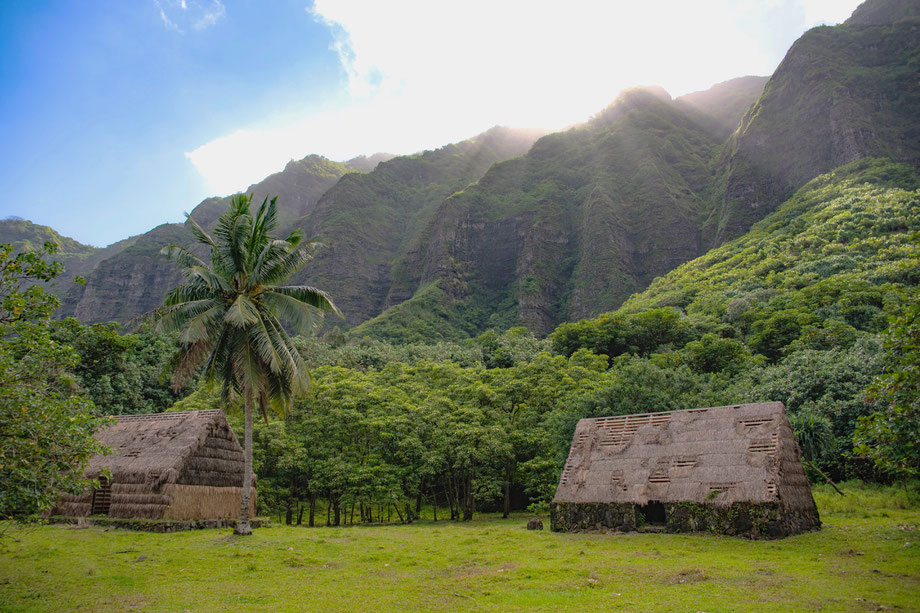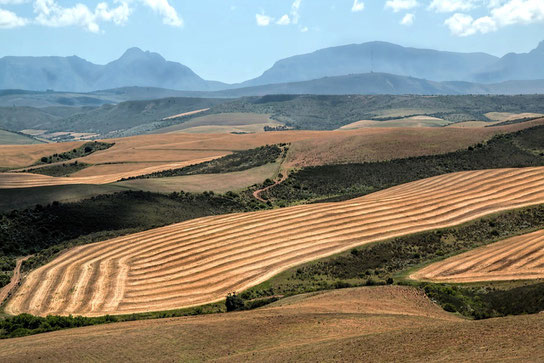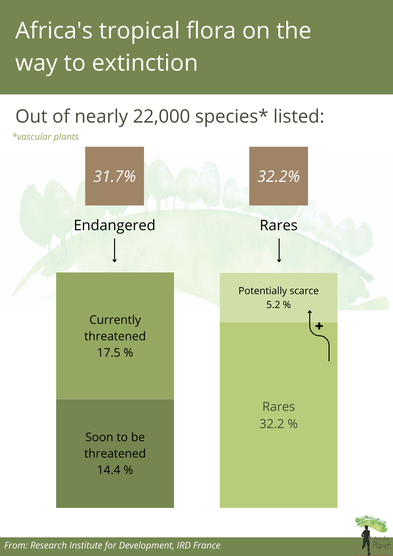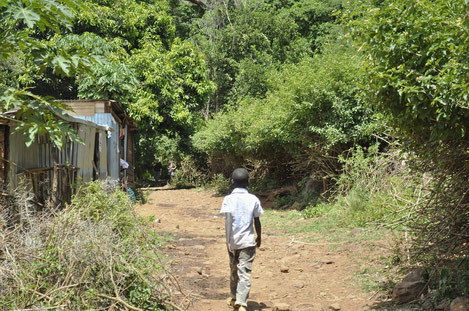To continue our special series on the African Forest, please read our fourth chapter covering the challenges of deforestation. Here you'll find an explanation of
the environmental factors currently impacting Africa's forests.
Previously : Tackling deforestation in Africa: what challenges for tomorrow
?
Africa's forests and environment

Environmental issues impacting the African forest
An ecosystem more exposed to climatic variations

While deforestation is for sure a long-term problem, that issue is, in itself, already impacted by the climate change negative externalities.
Intertropical forests are exposed to increasingly high temperatures as one moves closer to the equator. As a result, climate change tends to intensify
the heat and lengthen rain-free periods.
The usual dense vegetation needs this high hygrometry to resist. And its function as a "lung" is impaired, as its usual photosynthesis cycle is disrupted.
Scientific note : photosynthesis requires 6 molecules of carbon dioxide reacting with 6 molecules of water in the presence of solar energy, to give 6 molecules of oxygen and 1 molecule of
glucose, which are necessary for plant growth.
In other words, when the availability of water diminishes, the photosynthesis cycle loses its efficiency. Nonetheless, solar energy remains stored by the plant, which can slow its growth or even kill it.
Rising global temperatures are therefore already having an impact on the sustainability of today's African forests.
Furthermore, the ability of trees to absorb atmospheric carbon dioxide and lock it away in the form of wood helps slow global climate change. Trees also provide local cooling of the atmosphere through transpiration ("sweat", which is the opposite of photosynthesis, taking place at night in the absence of sunlight). It's a finely-balanced equation, in which any alteration, even the slightest, can be harmful.
Africa's biodiversity at risk

The depletion of natural forest environments has a major impact on biodiversity. Global warming has consequences for both ecological diversity (i.e. the diversity of ecosystems) and the corresponding specific diversity (i.e. the diversity of species).
African forests are home to an impressive number of different species, both flora and fauna, including a large number of endemic species.
The fact that these species can only be found in certain well-defined areas puts them at even greater risk of extinction.
These species, threatened with extinction by human activity and global warming, are the focus of international conservation programs.
This is the case, for example, of the Eastern Arc Mountains in Tanzania, whose biodiversity is endangered by deforestation linked to mining.
The Institut de Recherche pour le Développement also explains that a third of Africa's tropical flora is under serious threat. This does not include rare species.
The infographic above illustrates this situation.
This means that a total of around 60% of African flora species are at risk of extinction.
Climatic phenomena with a strong social impact
A priority for local populations

The loss of the endemic biodiversity of Africa's forests is not the sole threat.
Forests provide a habitat not only for flora and fauna, but also for local populations.
These forests are also important carbon sinks, stored in trees and soils.
The presence of trees ensures the geomorphological stability of the environment (the presence of roots in the soil and rocks) as well as an hydrosedimentary regulation (nitrogen cycle, groundwater).
Trees, and plants in general, are the only ones truly capable of using nitrates
(NO3- , N being a nitrogen atom) contained in wastewater (waste and fertilized water) for their own growth.
So, on the one hand, maintaining a plant-rich environment helps to keep groundwater unpolluted.
And on the other, trees help to bring some of the groundwater to the surface, forming watersheds (rivers and streams).
Deforestation makes it difficult for local populations to have access to drinking water, which is a social impact hard to offset.
Secondly, the harvesting of trees and climatic variations have increased the soil's exposure to erosion. This makes the soil more prone to landslides, including mudflows, which are particularly dangerous for local populations. The recent tragedy in the DRC's South Kivu province shows the disastrous effects of deforestation on soil conditions.
Erosion also weakens the productive capacity of soils, reducing their agricultural potential. And climate change has intensified phenomena such as storms and bush fires, increasing the vulnerability not only of forests, but also of local homes and crops.
To sum up
The African deforestation isuue faces many challenges. These include corruption, population growth, lack of economic resources and ecological disruption. Because of its carbon storage function, the African forest makes a significant contribution, along with the Amazon rainforest, to ensuring global climate stability. This means tomorrow's challenges involve us all.
Featured in our "Forests of Africa" series:
Article submitted by Flora, from the Run for Planet team
Find her online : linkedin.com
References :
- Africa Museum. FR: “Le risque de glissements de terrain dans le Rift du Kivu est lié à la déforestation et la croissance démographique”/ ENG: "The landslide risk in the Kivu Rift is linked to deforestation and population growth". Published 2021, August 20. From africamuseum.be
- Cyclone OI. FR: “RD Congo, une tragédie annoncée” / ENG: "DRC, a tragedy in waiting" . Published 2023, May 9. From cycloneoi.com
- GEO with AFP. FR: “La RDC peine à protéger sa forêt tropicale, vitale pour le climat”/ ENG: "The DRC struggles to protect its rainforest, crucial for the climate" . Published 2019, December 7. From geo.fr
- Institut de Recherche pour le Développement, IRD France. FR: “Près d’un tiers de la flore tropicale africaine menacée d’extinction”/ ENG: "Nearly a third of Africa's tropical flora at risk of extinction". Published 2019, November 20. From ird.fr




Écrire commentaire